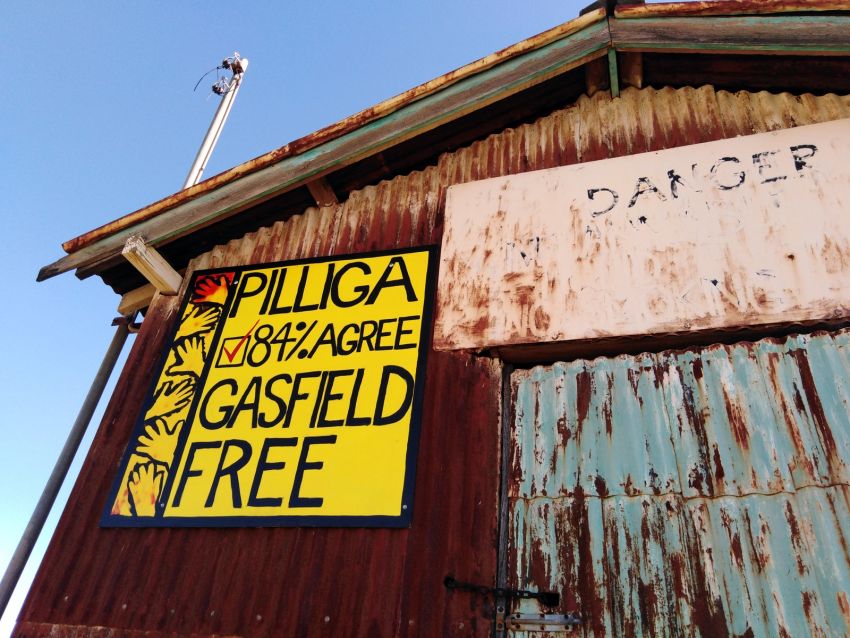
I was as pissed off as most people when Santos' coal seam gas project was approved in Narrabri, despite 98% of people opposing it. So I decided to spend a few days cycling the area in the north-west of New South Wales before it's possibly destroyed forever. Along the way, I met the activists who are fighting back.
Day 1: Sydney to Narrabri
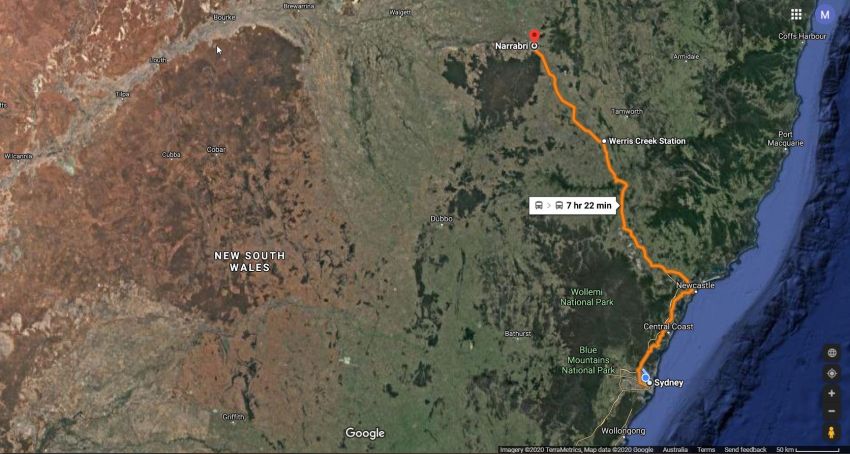
7.37am I turn up at Sydney Central Station way too early...
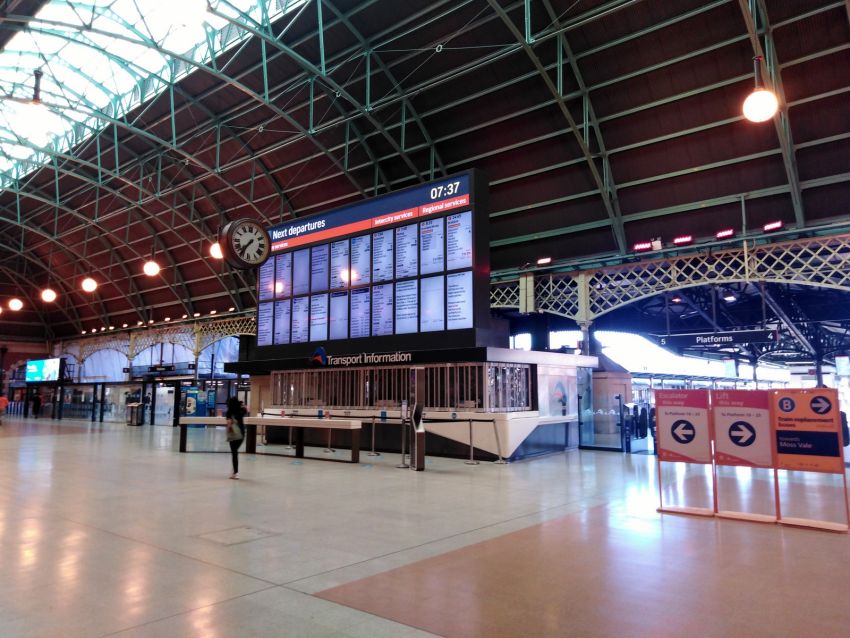
I arrive two hours before my 9.33am train to Narrabri is scheduled to leave. Call me neurotic.
7.40am ...but it's good that I'm early because I have to stuff my bike into this box
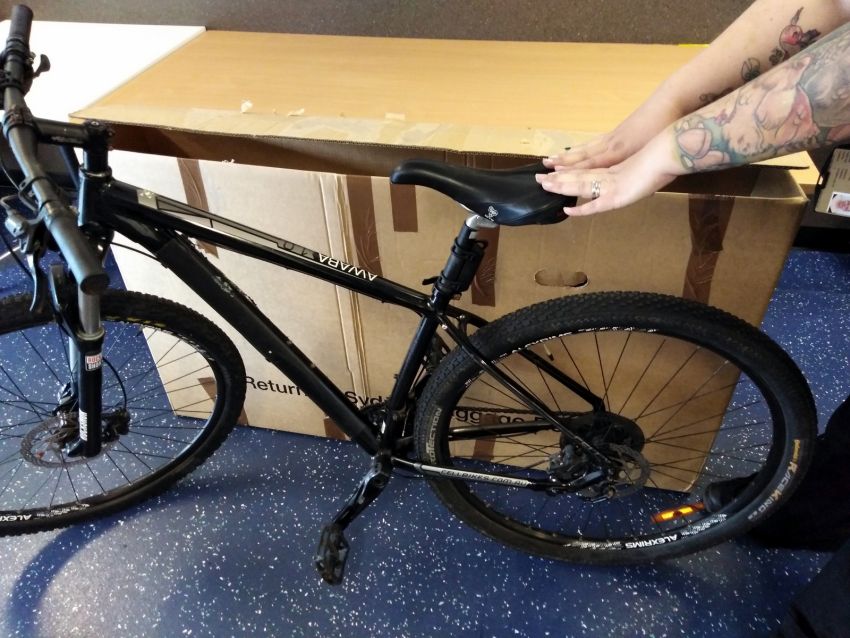
I'm used to hanging my bike on a hook or leaning it against the seat when I travel on trains. But you cannot take bikes in the train carriage when you travel to Narrabri. It turns out I have to fit my 29-inch adult's mountain bike into this box made for a toddler's scooter. By removing the seat, then the front wheel, then the pedals and then the handlebars, I finally get it to fit. Hopefully I'll figure out how to put it back together at the other end, if it isn't damaged beyond all repair.
8.10am This train is set to split in two
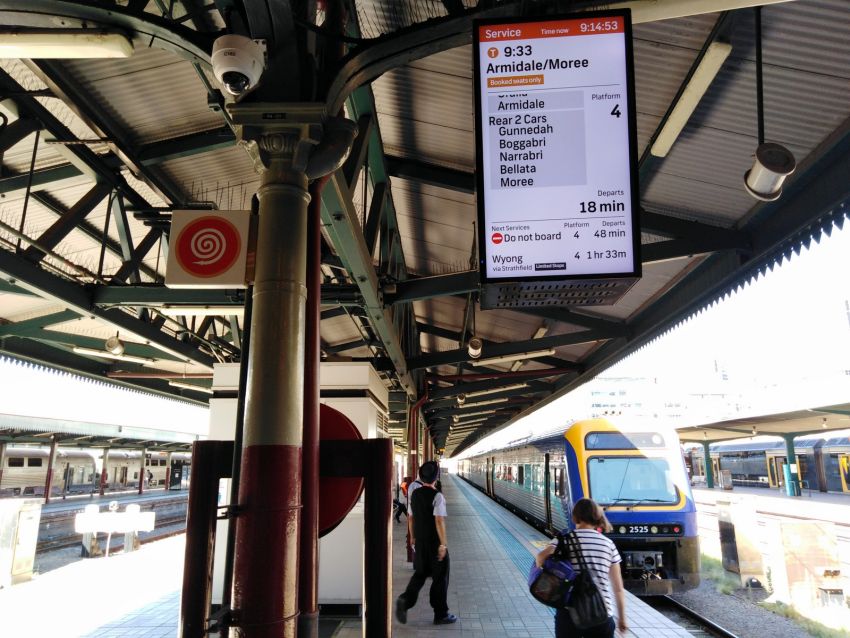
When it reaches Werris Creek, half the train will travel on to Armidale and the other half, with me in it, will travel on to Moree, via Narrabri.
12.25pm The train food tastes a lot better than it looks
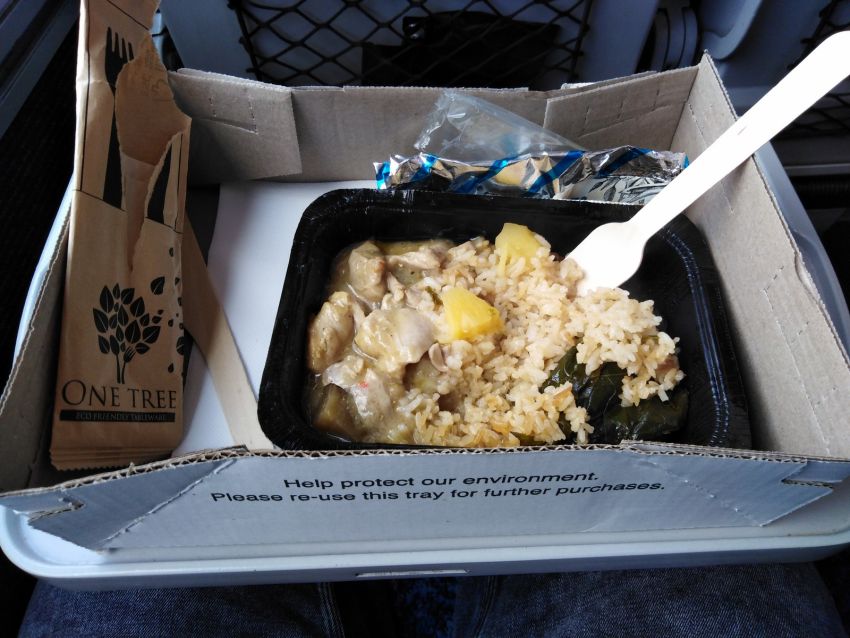
The $10.50 Thai green chicken curry is surprisingly good.
1.30pm Travelling by train beats flying
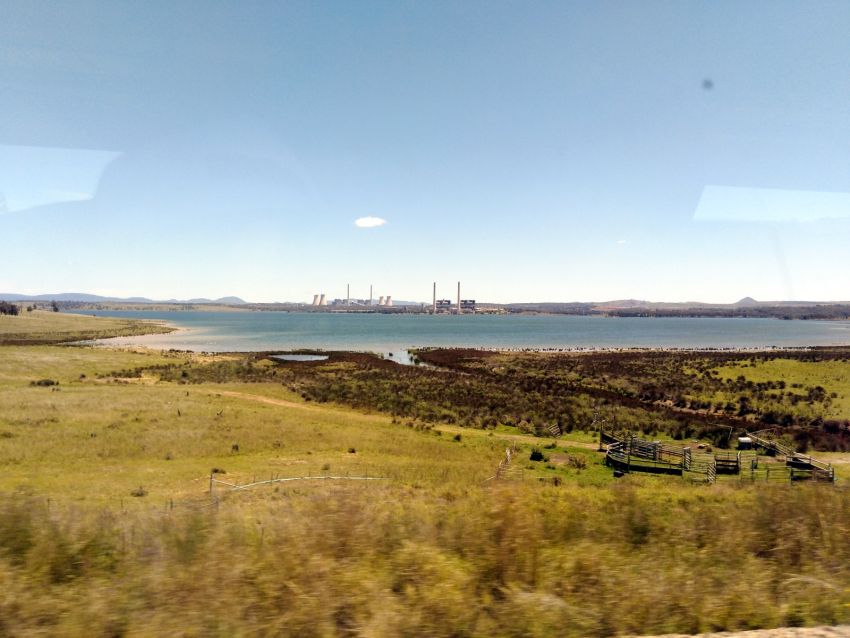
Trains produce fewer emissions than planes, but there are other benefits. If you flew, you wouldn't get to see the large eastern grey kangaroos that stand upright right next to the track, staring intently as you pass by. You wouldn't get to see the shadowed silhouettes of swamp wallabies, shading themselves among emerald green ferns. You wouldn't get a sense of the huge scale of Australia's coal industry as you pass gargantuan, gaping mines and endless, snaking coal trains. And you wouldn't get to see this, the coal-fired Liddell Power station, which has become symbolic of Australia's energy mess as owner AGL tries to shut it down but the government tries to prolong its life. It shines like an evil beacon in the early afternoon sun, surrounded by the cobalt-blue Liddell Lake. In 2016, AGL closed the lake to the public after the discovery of a brain-eating virus in its waters. “We acknowledge this decision may be disappointing for regular Lake Liddell users,” AGL Macquarie general manager Ian Brooksbank said at the time. The added surprise is that people still choose to camp at the Lake Liddell Recreation Area that looks directly at the station's hulking cooling towers.
3pm Our train has broken down
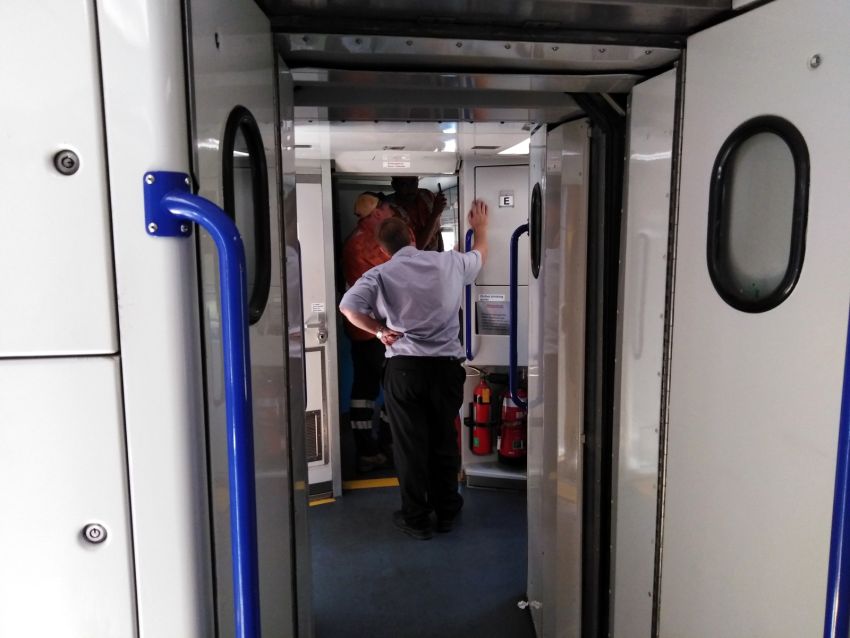
The air conditioning has failed in the buffet car and the rail engineers can't fix it, so the whole train has to go to Armidale and the Moree-bound passengers will be transferred to a bus. "The fridges are OK so we may have to put our heads in there for a while," says the ticket inspector, Sue. "It's so friggin' hot." Then she turns to a group of elderly travellers who are heading for Moree, the town famed for its spas fed by the Great Artesian Basin, which could be contaminated by Santos' Narrabri gas project. "You'll love Moree," she says. "Injured footballers go to the spas there to heal. People I've had on the train go for a week and come back feeling like different people."
3.50pm This bus is probably going to shake my bike to fragments
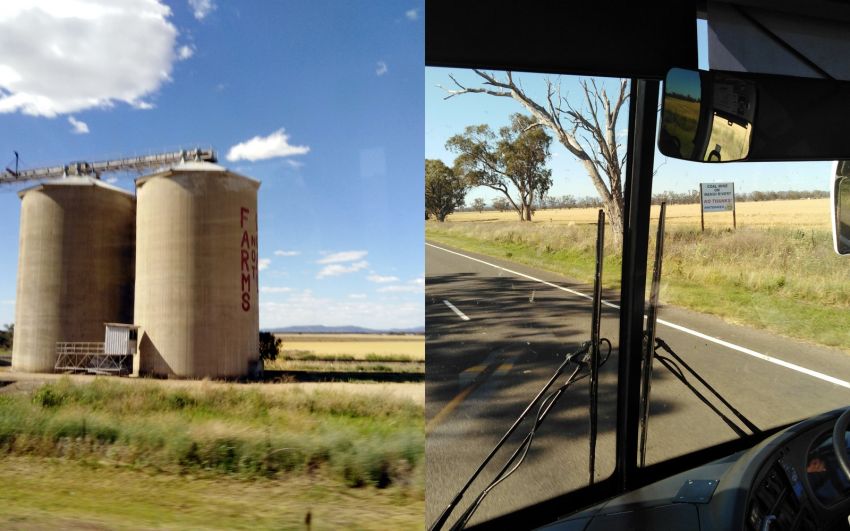
I'm cursing every rattle and shudder on the road from Werris Creek to Narrabri as we pass signs saying "Farms Not Coal" and "Coal Mine on Namoi River? No Thanks!"
6pm I've arrived too late for the Gathering for Gomeroi
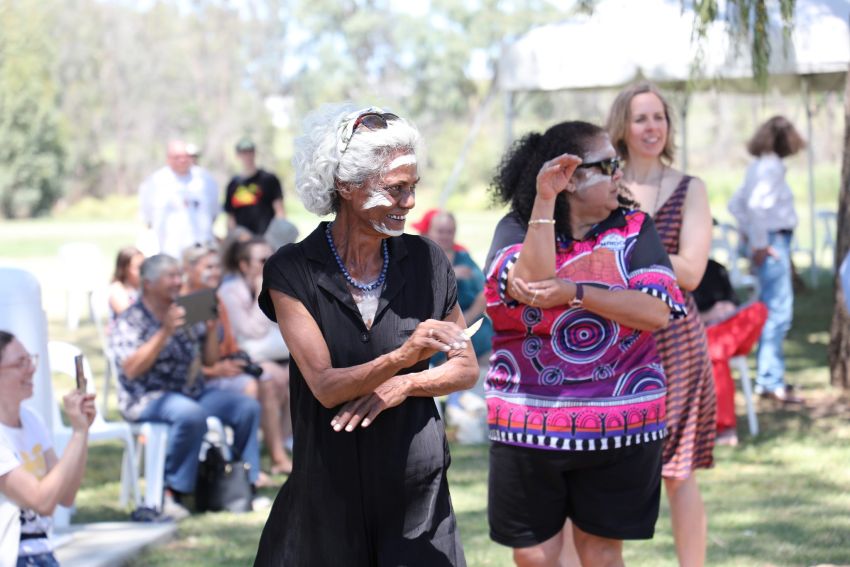
Delayed by the bus transfer and having to rebuild my bike, I've missed the Gathering For Gomeroi, an anti-coal seam gas event organised by the local Indigenous people. I call elder Polly Cutmore (pictured above at the gathering, photo courtesy of The Koori Mail) to apologise. She says she and the other Gomeroi activists are too exhausted to speak after three days of organising the gathering. "We'll speak later in the week," she says. "I'm Gomeroi so I'm not going anywhere! Enjoy the area. You'll absolutely love it."
6.30pm The owner of my Airbnb grows his own produce
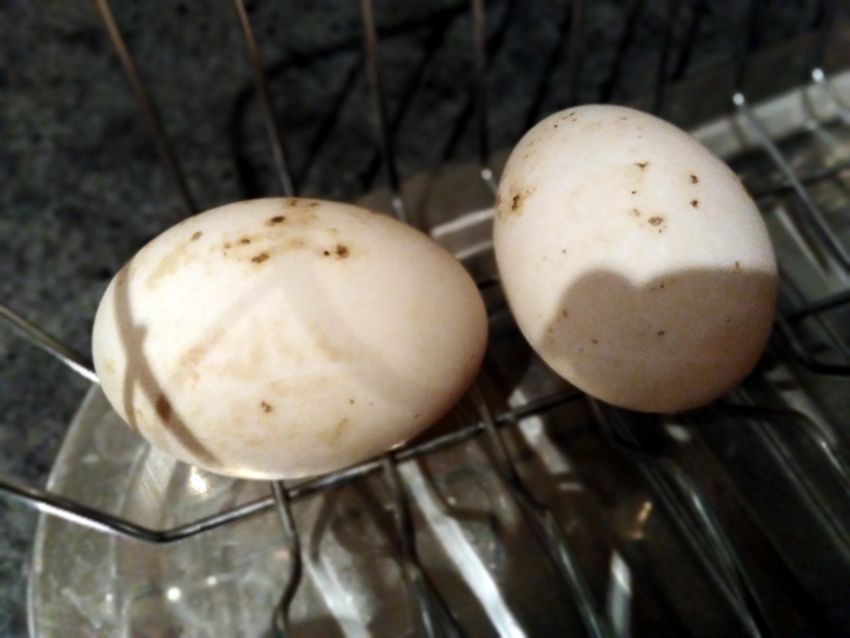
I check into my Airbnb, which was about a quarter of the price of the hotels in town. I ask the owner if he's had any gas workers stay. "No, none of those, yet," he says. "But I guess they may come. I've had people working with the bilbies in the Pilliga, conservationists, farm workers, train workers, lots of people passing through on the way from Sydney to Brisbane. Help yourself to veggies from the garden." He hands me two duck eggs. "I'm lucky to get those. The crows usually beat me to it." That night I email William Chrighton, a Riverina-raised singer-songwriter who performed at the Gathering for Gomeroi before leaving for the Pilliga Forest, where Santos is drilling for gas. This is our conversation:
- How was the Gathering For Gomeroi?
It was a wonderful energy which has lit the spark in the community that will grow and grow and grow. I am confident in saying that Santos will not succeed in their mission and that a culturally diverse community who is united in wanting a clean, sustainable and regenerative future for all and who is totally committed to the effort of protecting one of the greatest natural water sources in the world will prevail. - What made you get involved?
I have been involved in the anti-coal seam gas movement for a number of years. The truth is clear and the facts are in - it's poisonous and devastating to the natural environment. Now is a critical time. Each and every one of us has to make the very real decision - either to be complicit with the destruction of the environment or to make a stand and contribute in whatever ways we can to help protect it. Doing nothing is being complicit in Mother Earth's destruction. We have to stop letting these corporations who do not care about the future generations come in, throw their money around, buy off people and towns while simultaneously destroying the future. Renewable and regenerative energy is the way forward. Greed is slowing the transition down, but keep the faith, because the tide is turning. - You're now visiting the Pilliga Forest. What have you found there?
It's an incredibly special and powerful place and I'd urge every Australian to get out there and see exactly what is at stake. - Tell us about your latest single.
It's a song I wrote called "Your Country" and primarily it's about unity. We all call this great continent home and we all have an obligation to protect our home for future generations. This song is a call to all to stand up and fight for the country you love. The track also features incredible musicians William Barton, Julieanne Crighton, Jeff Lang, Matt Sherrod and James Haselwood.
Read Part 2 here.
Comments? Criticisms? Corrections? Email [email protected]
ABOUT THE AUTHOR: Mat Ward has been writing for Green Left since 2009. He also wrote the book Real Talk: Aboriginal Rappers Talk About Their Music And Country and makes political music.